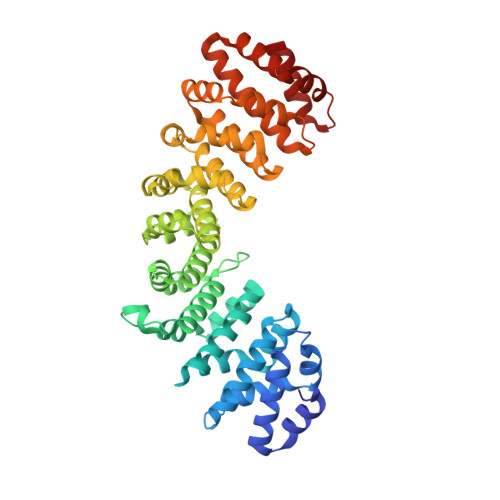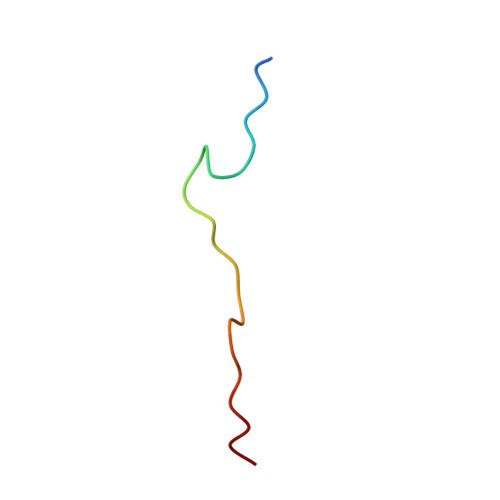Recognition of the TDP-43 nuclear localization signal by importin alpha 1/ beta.
Doll, S.G., Meshkin, H., Bryer, A.J., Li, F., Ko, Y.H., Lokareddy, R.K., Gillilan, R.E., Gupta, K., Perilla, J.R., Cingolani, G.(2022) Cell Rep 39: 111007-111007
- PubMed: 35767952
- DOI: https://doi.org/10.1016/j.celrep.2022.111007
- Primary Citation of Related Structures:
7N9H - PubMed Abstract:
Cytoplasmic mislocalization of the TAR-DNA binding protein of 43 kDa (TDP-43) leads to large, insoluble aggregates that are a hallmark of amyotrophic lateral sclerosis and frontotemporal dementia. Here, we study how importin α1/β recognizes TDP-43 bipartite nuclear localization signal (NLS). We find that the NLS makes extensive contacts with importin α1, especially at the minor NLS-binding site. NLS binding results in steric clashes with the C terminus of importin α1 that disrupts the TDP-43 N-terminal domain (NTD) dimerization interface. A putative phosphorylation site in the proximity of TDP-43 R83 at the minor NLS site destabilizes binding to importins by reducing the NLS backbone dynamics. Based on these data, we explain the pathogenic role of several post-translational modifications and mutations in the proximity of TDP-43 minor NLS site that are linked to disease and shed light on the chaperone activity of importin α1/β.
- Department of Biochemistry and Molecular Biology, Thomas Jefferson University, 1020 Locust St., Philadelphia, PA 19107, USA.
Organizational Affiliation:

















